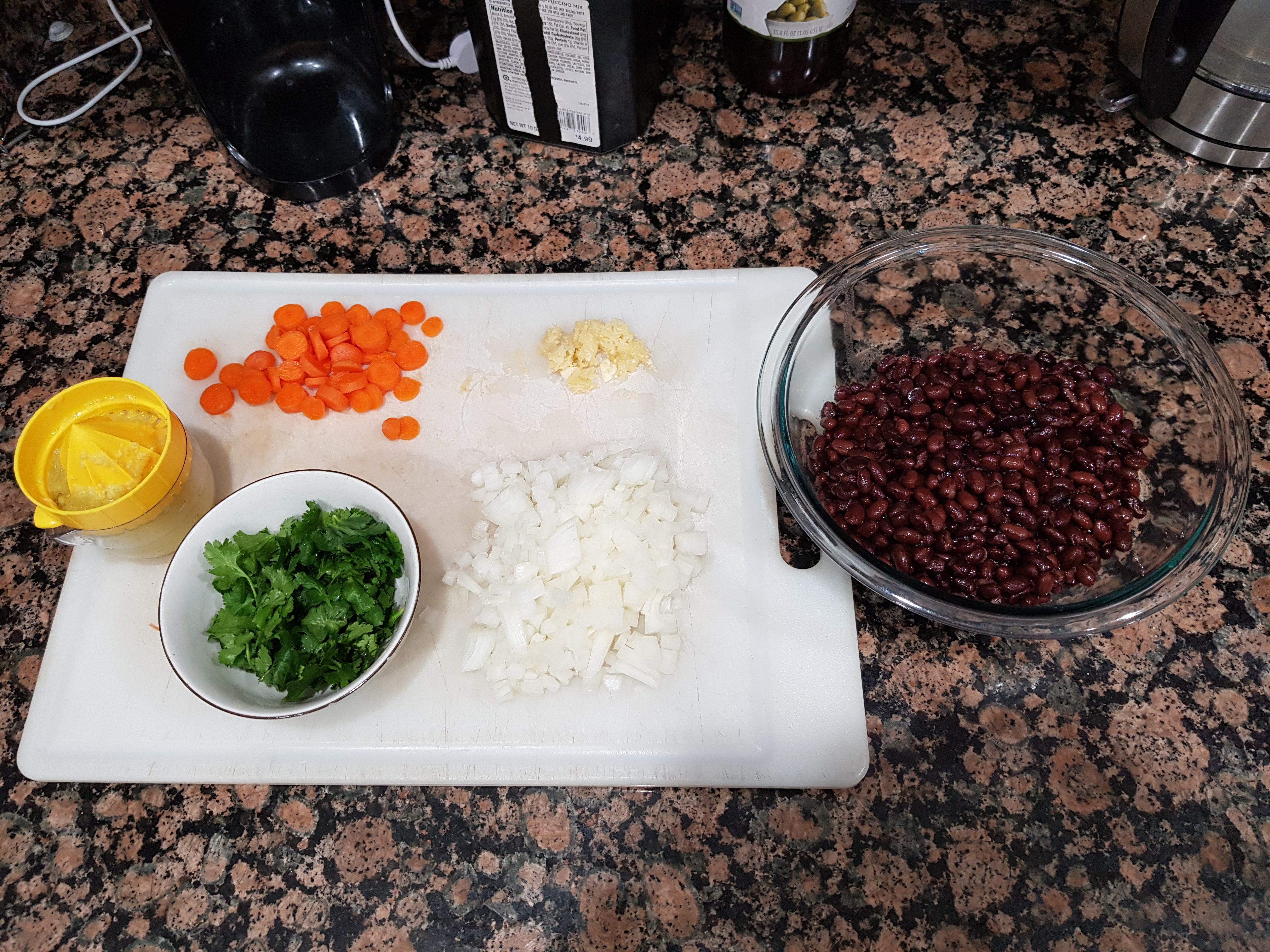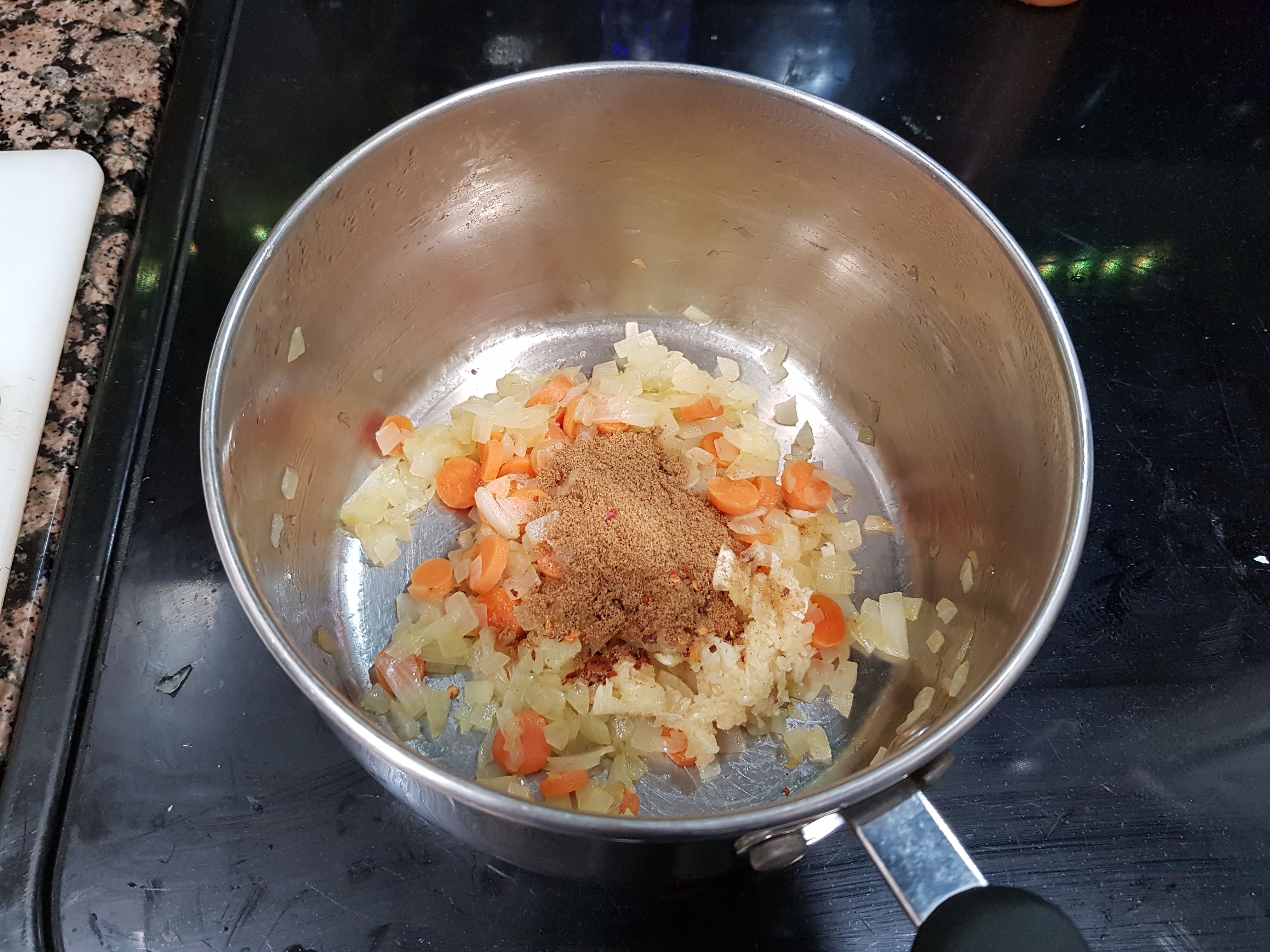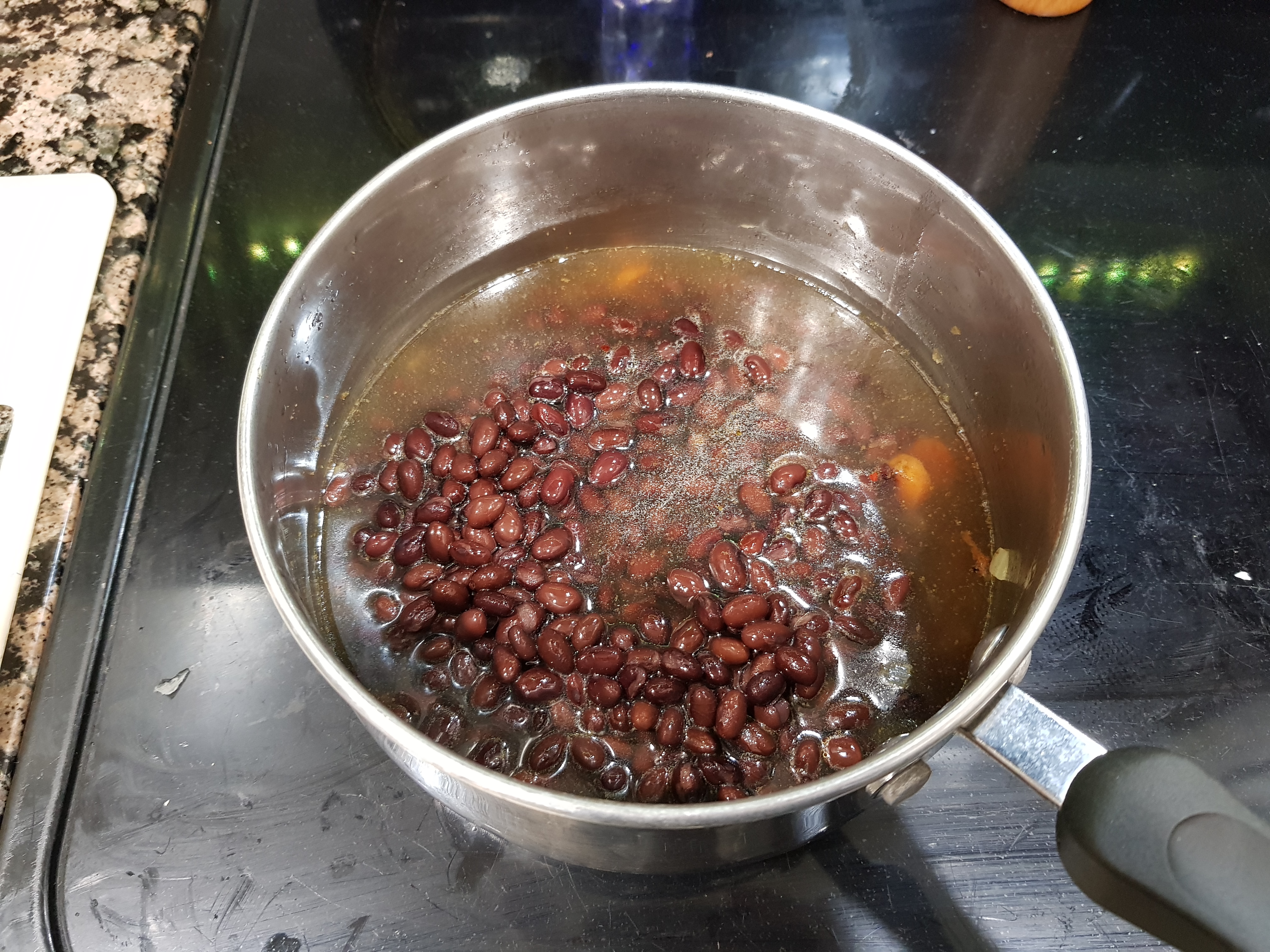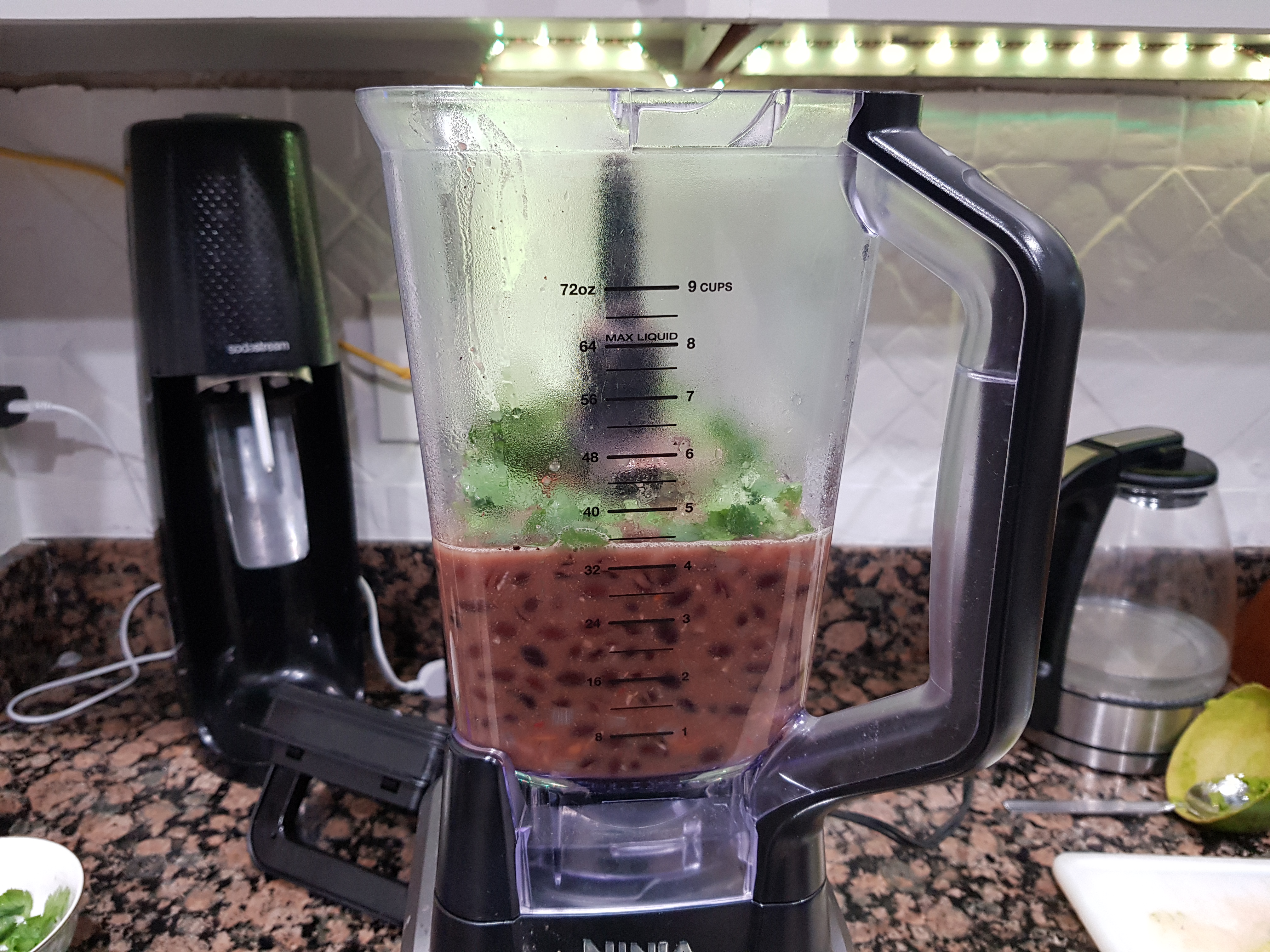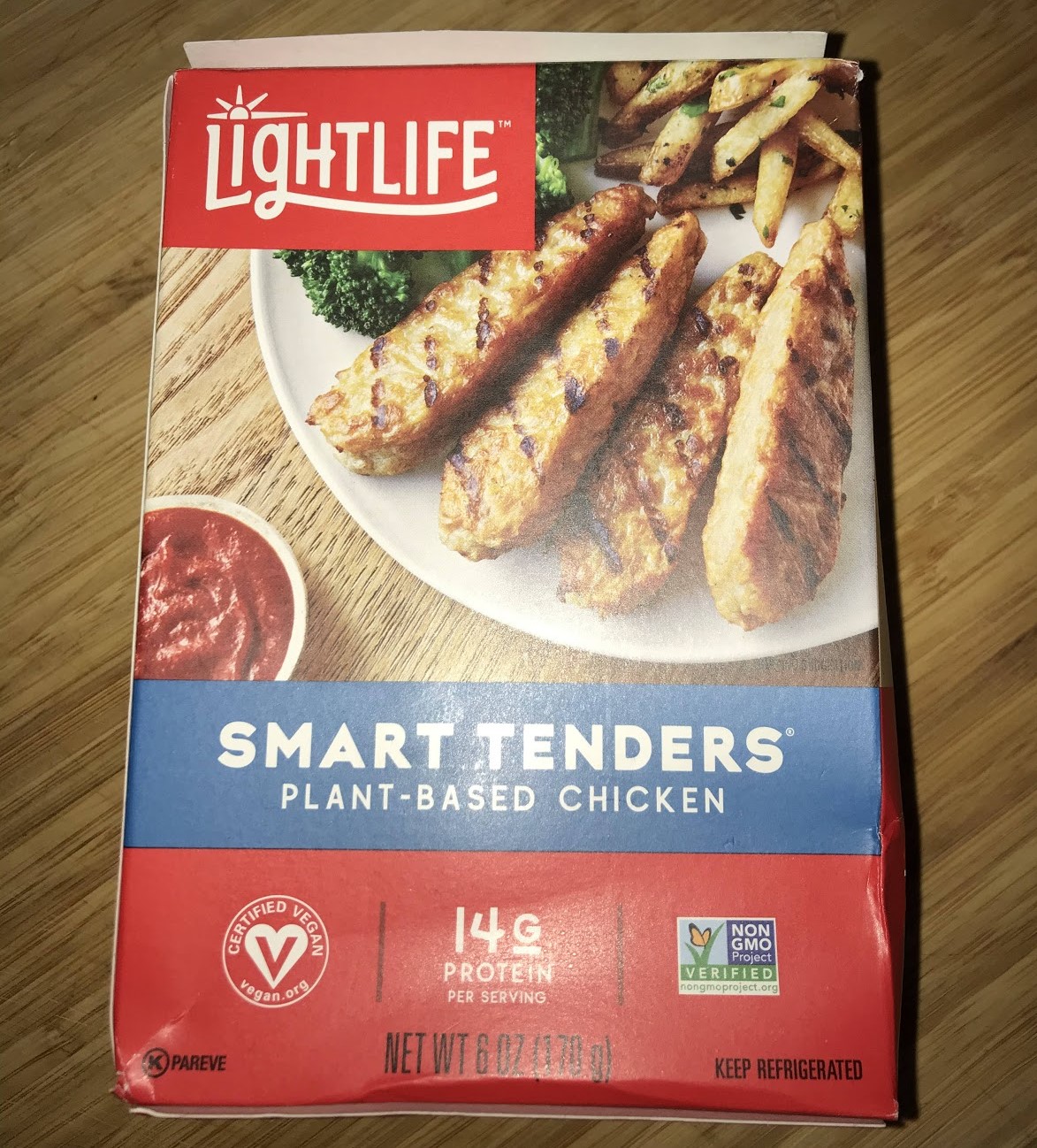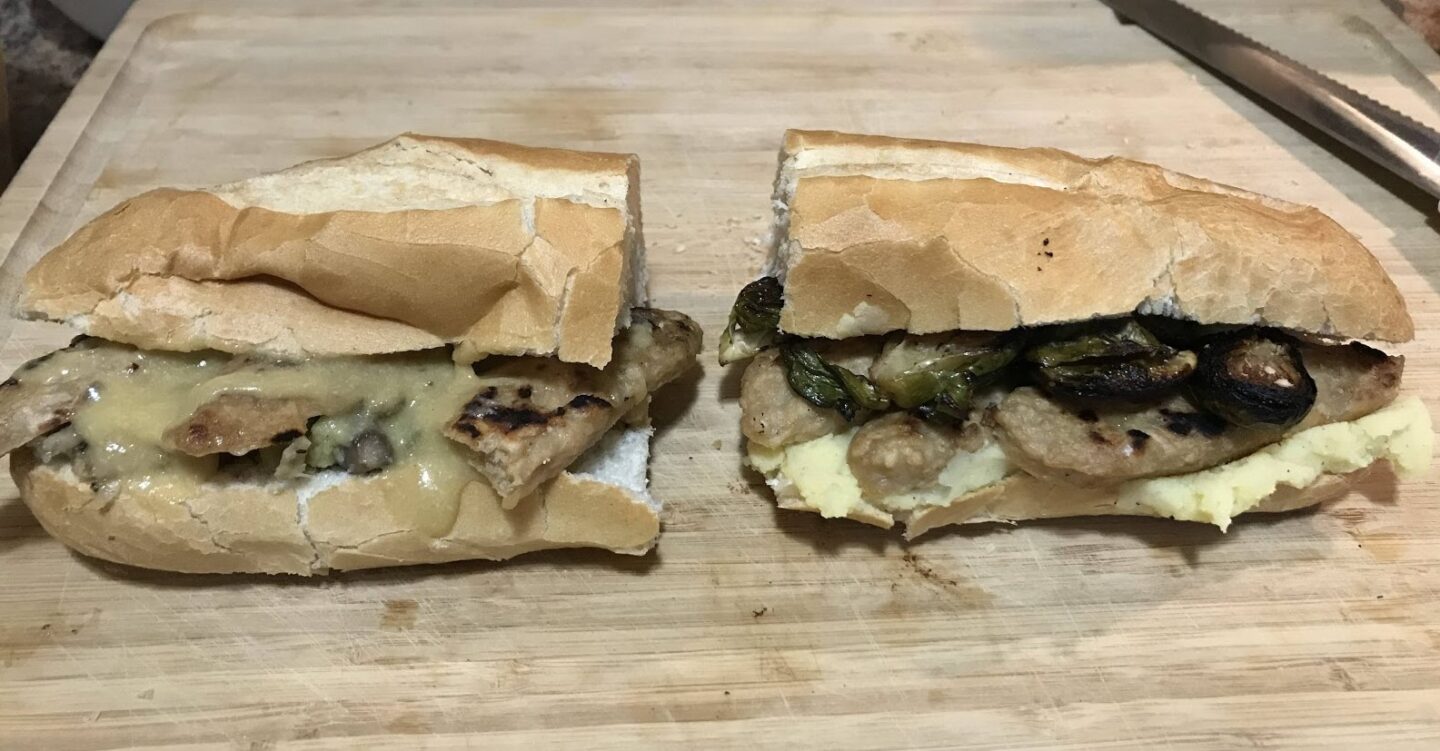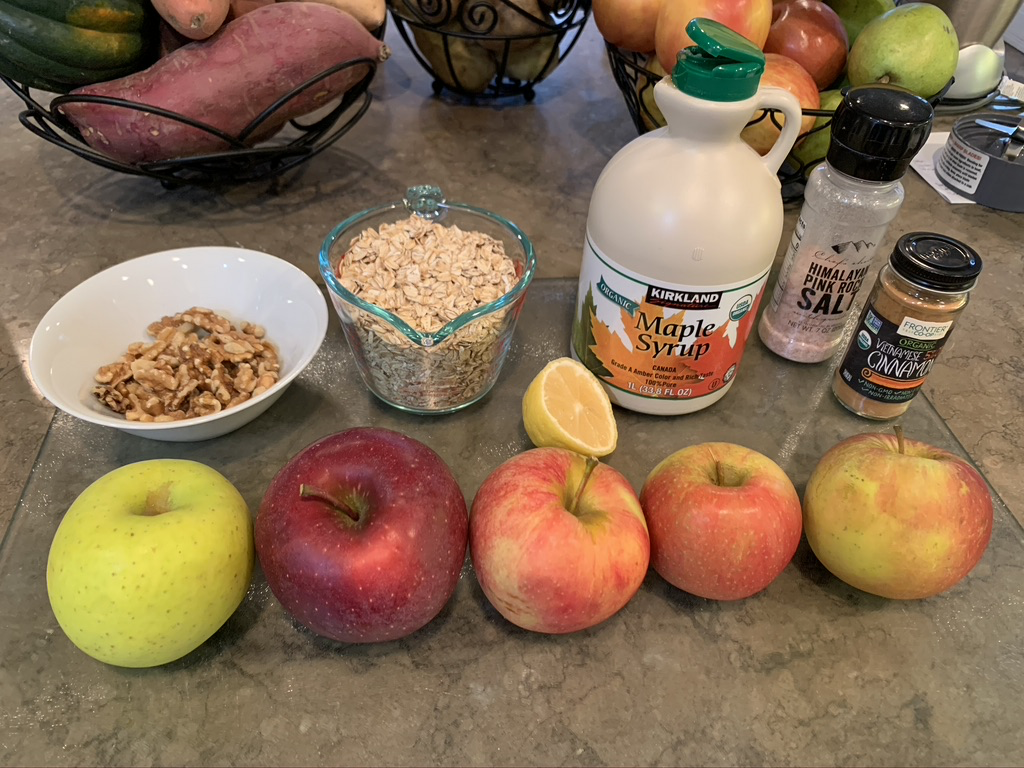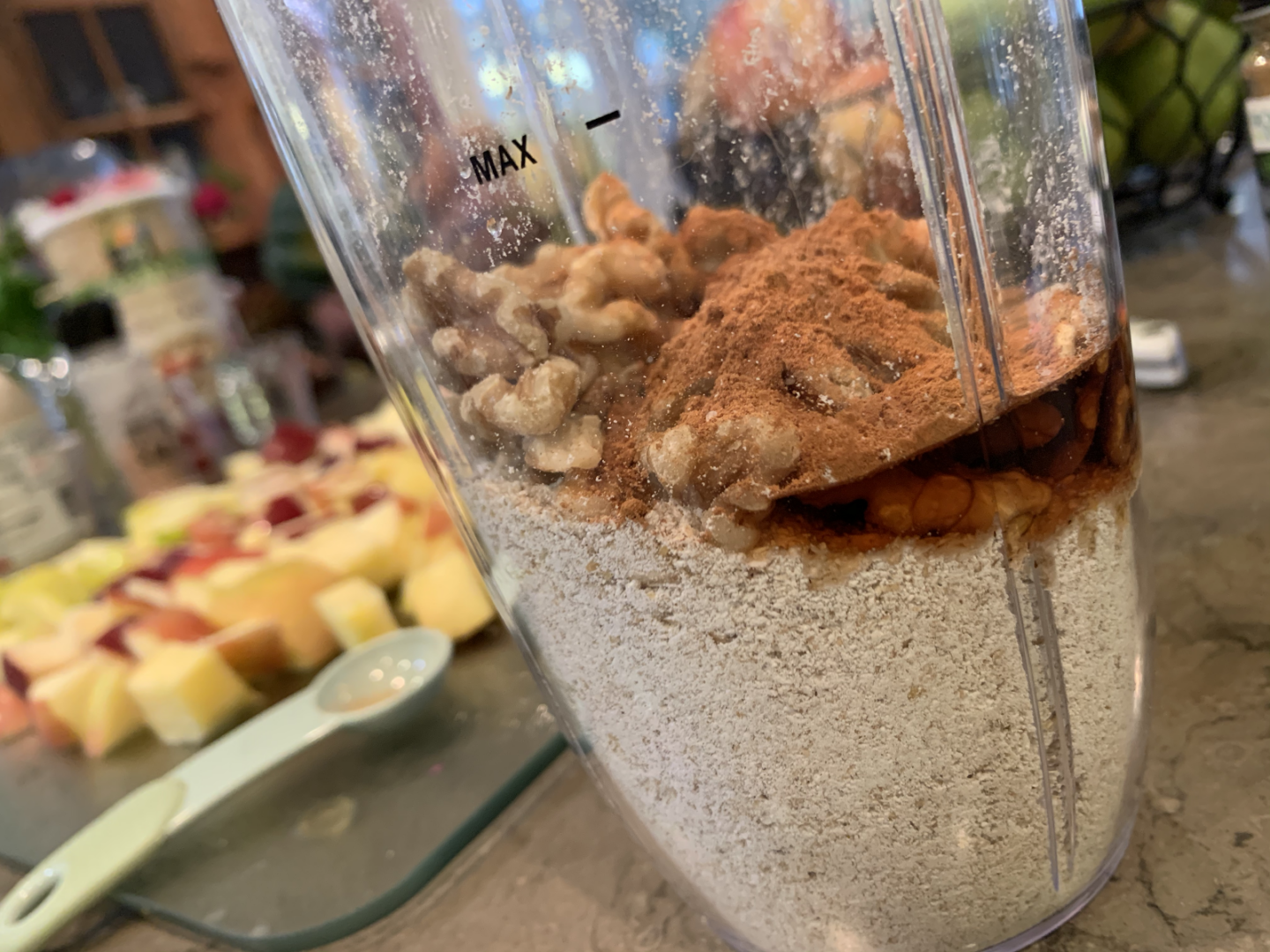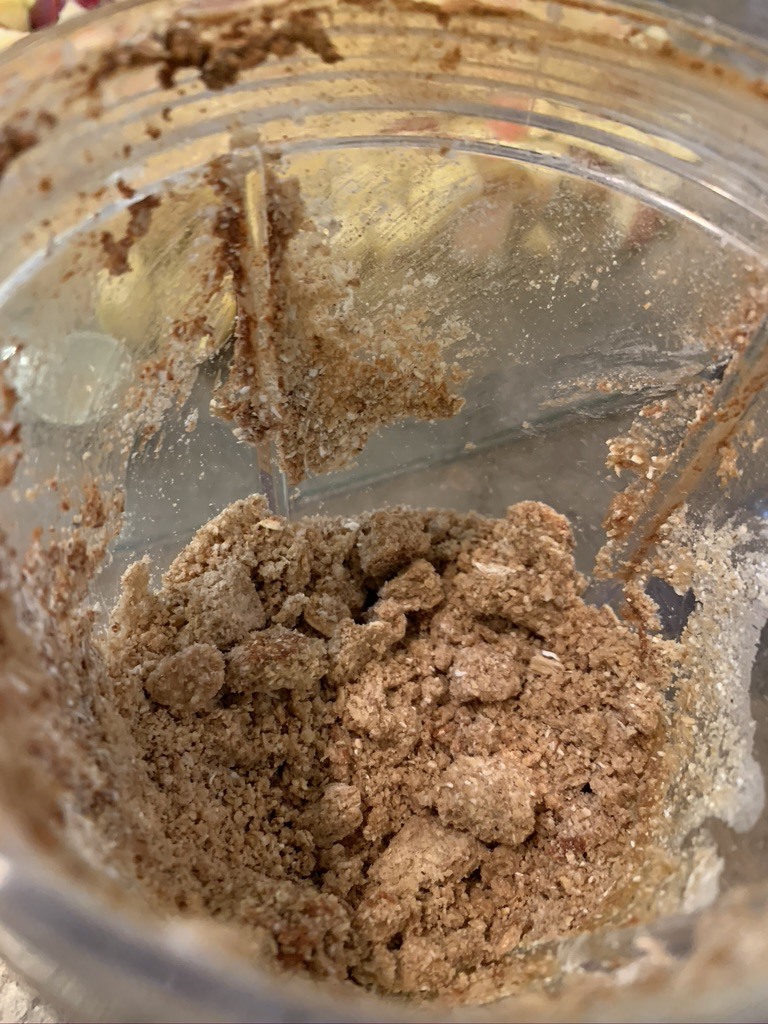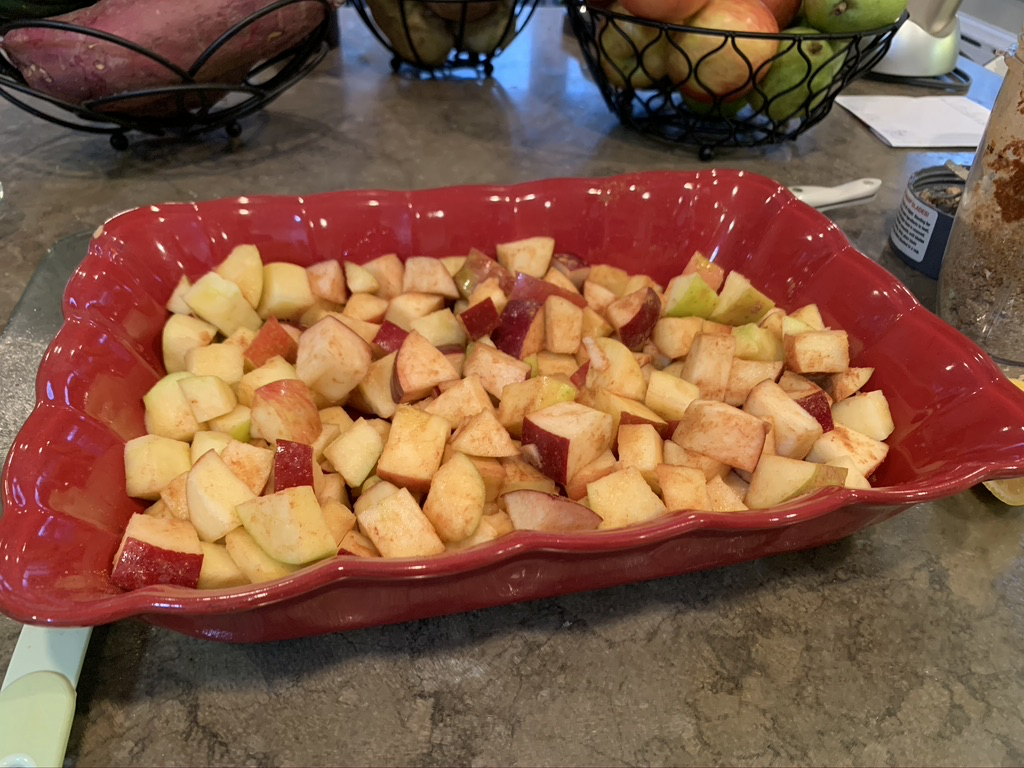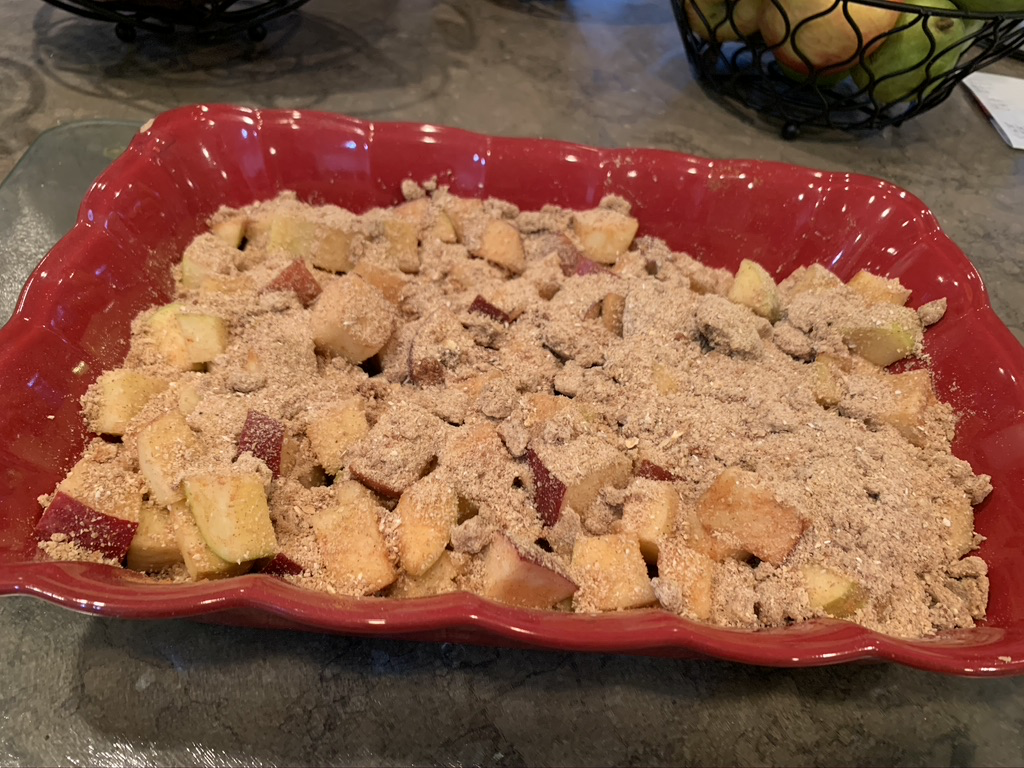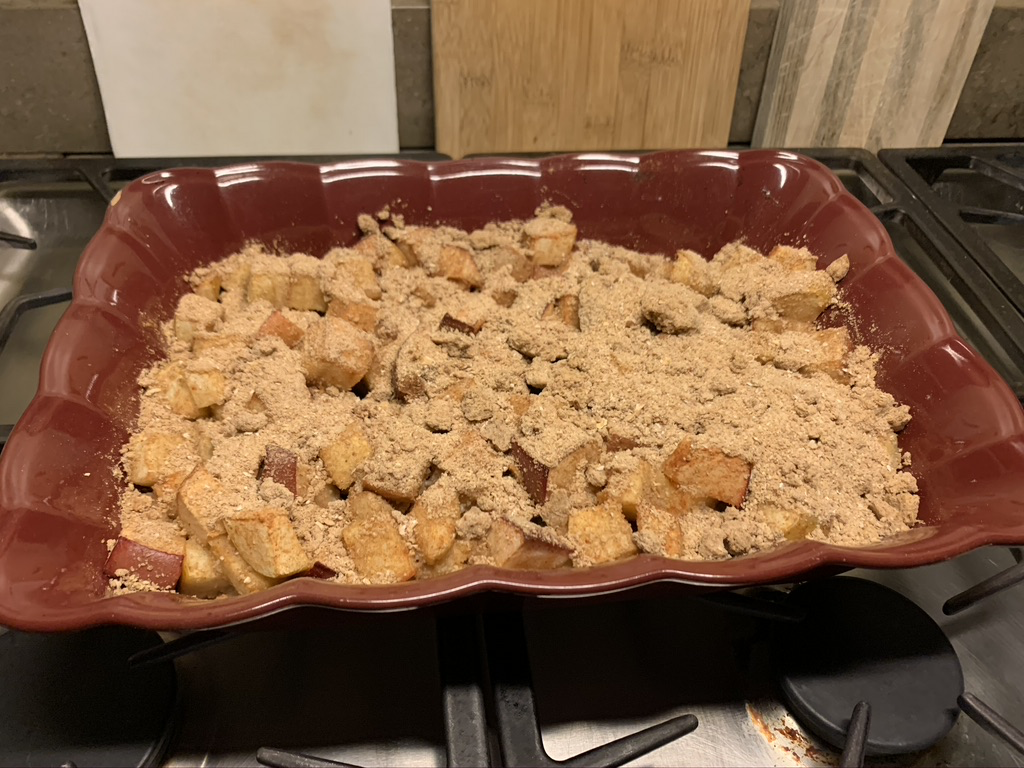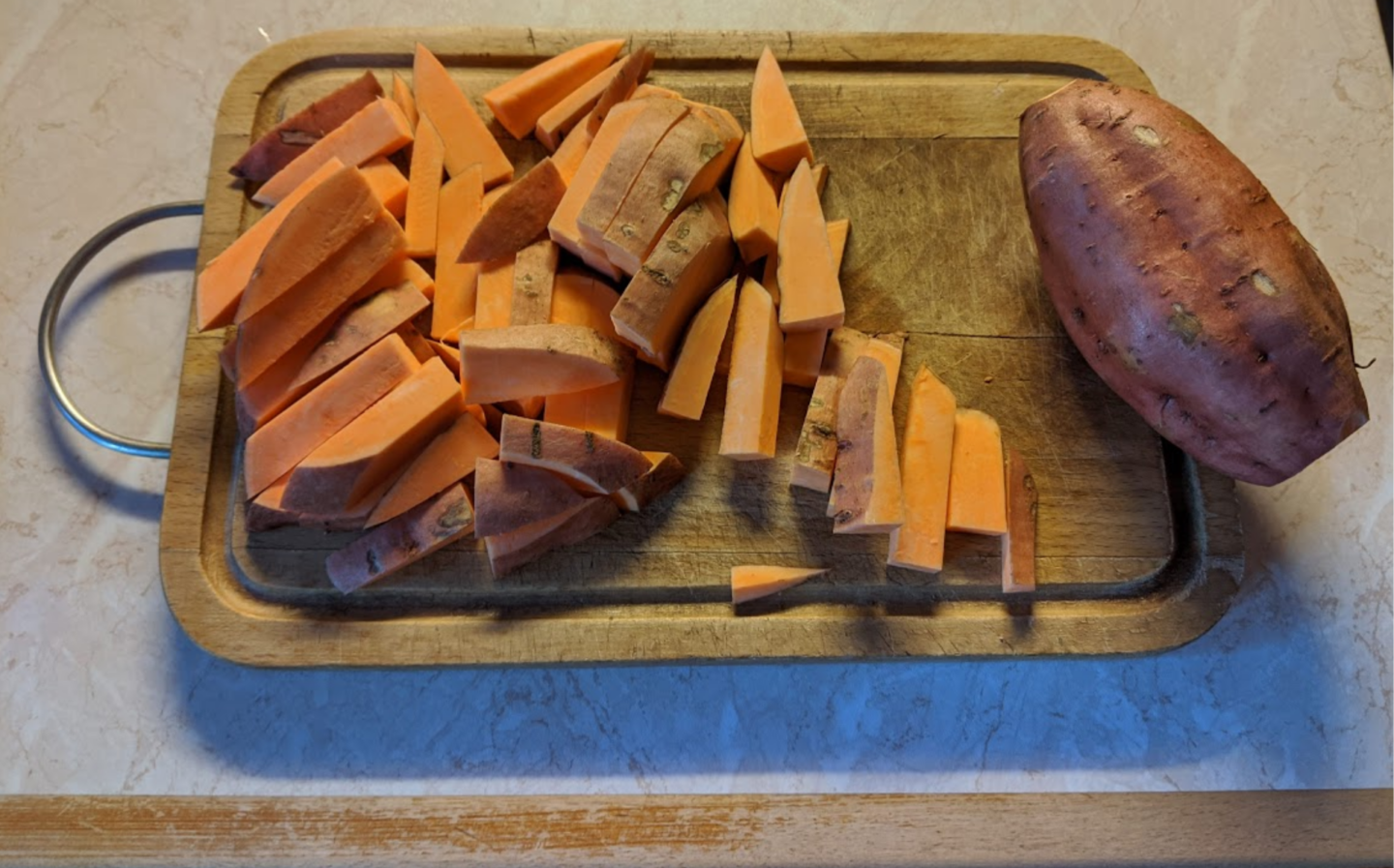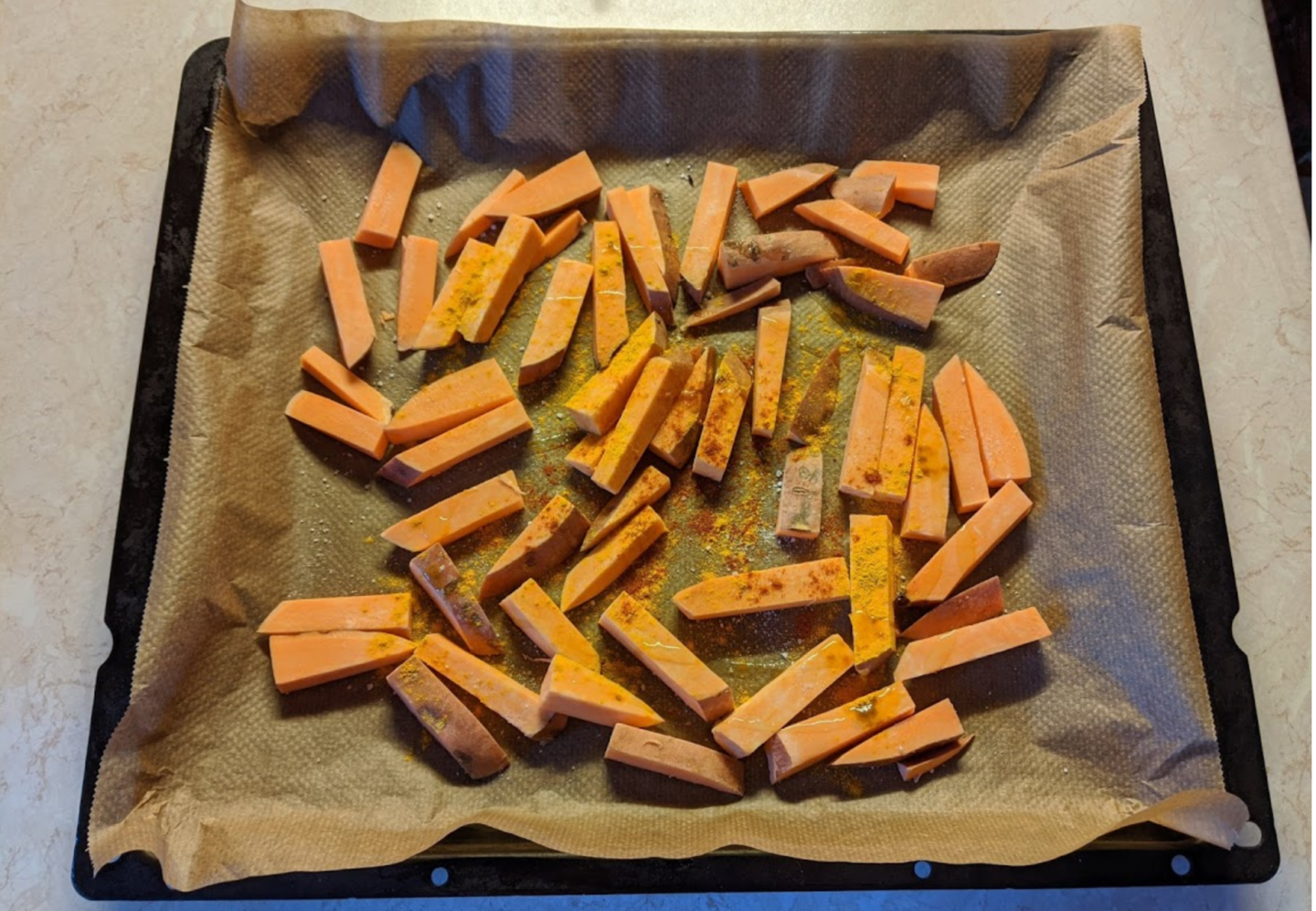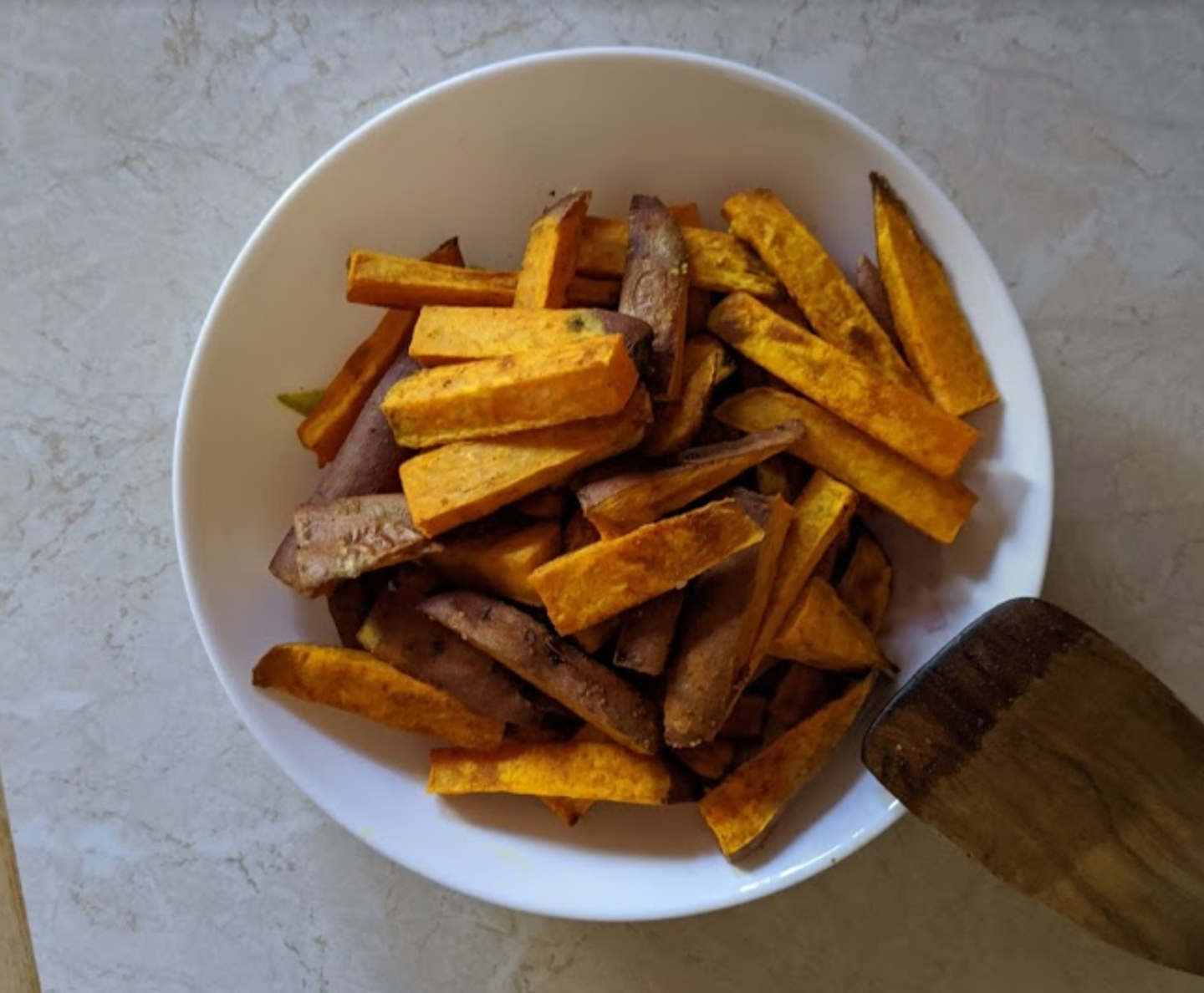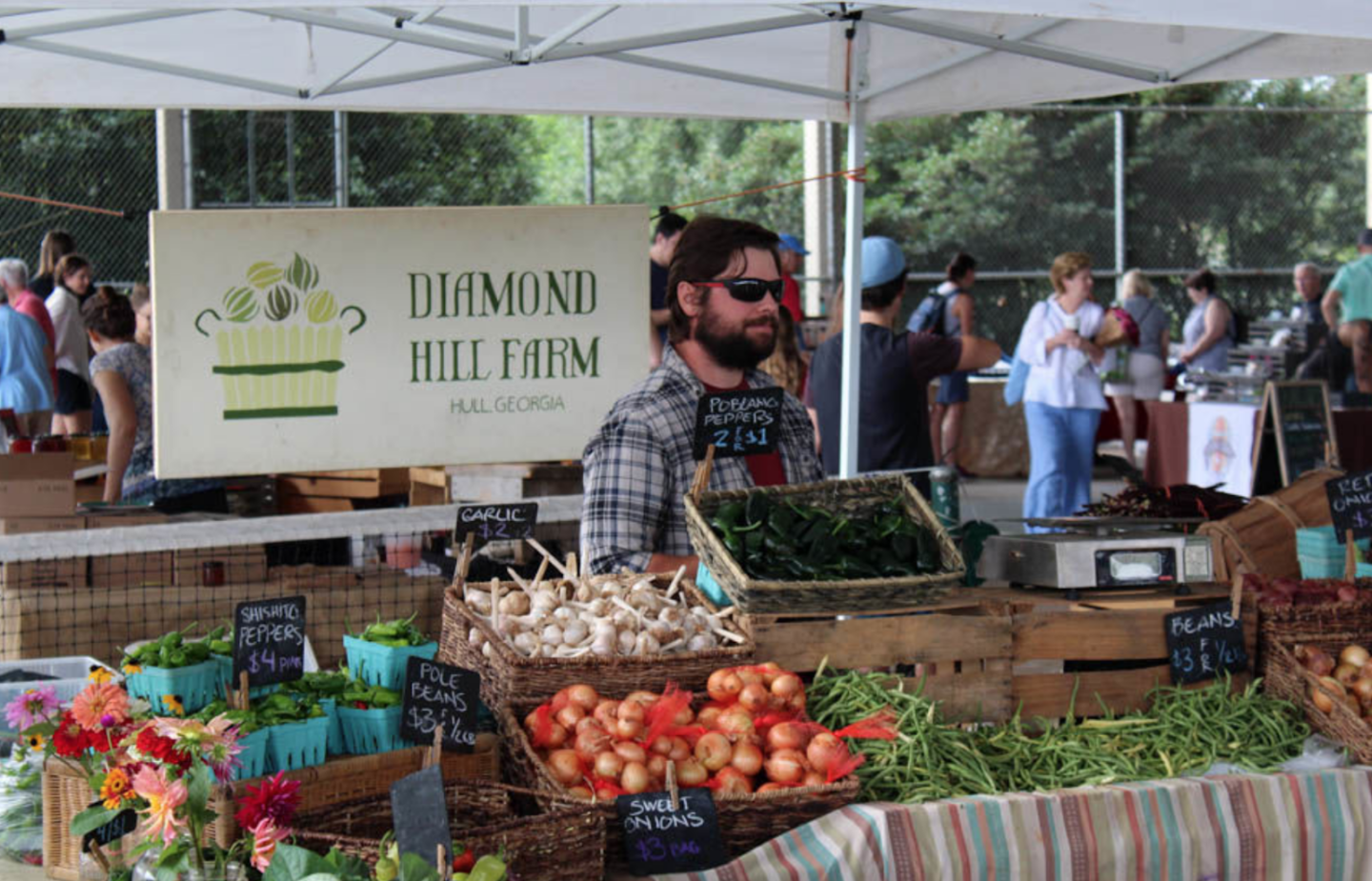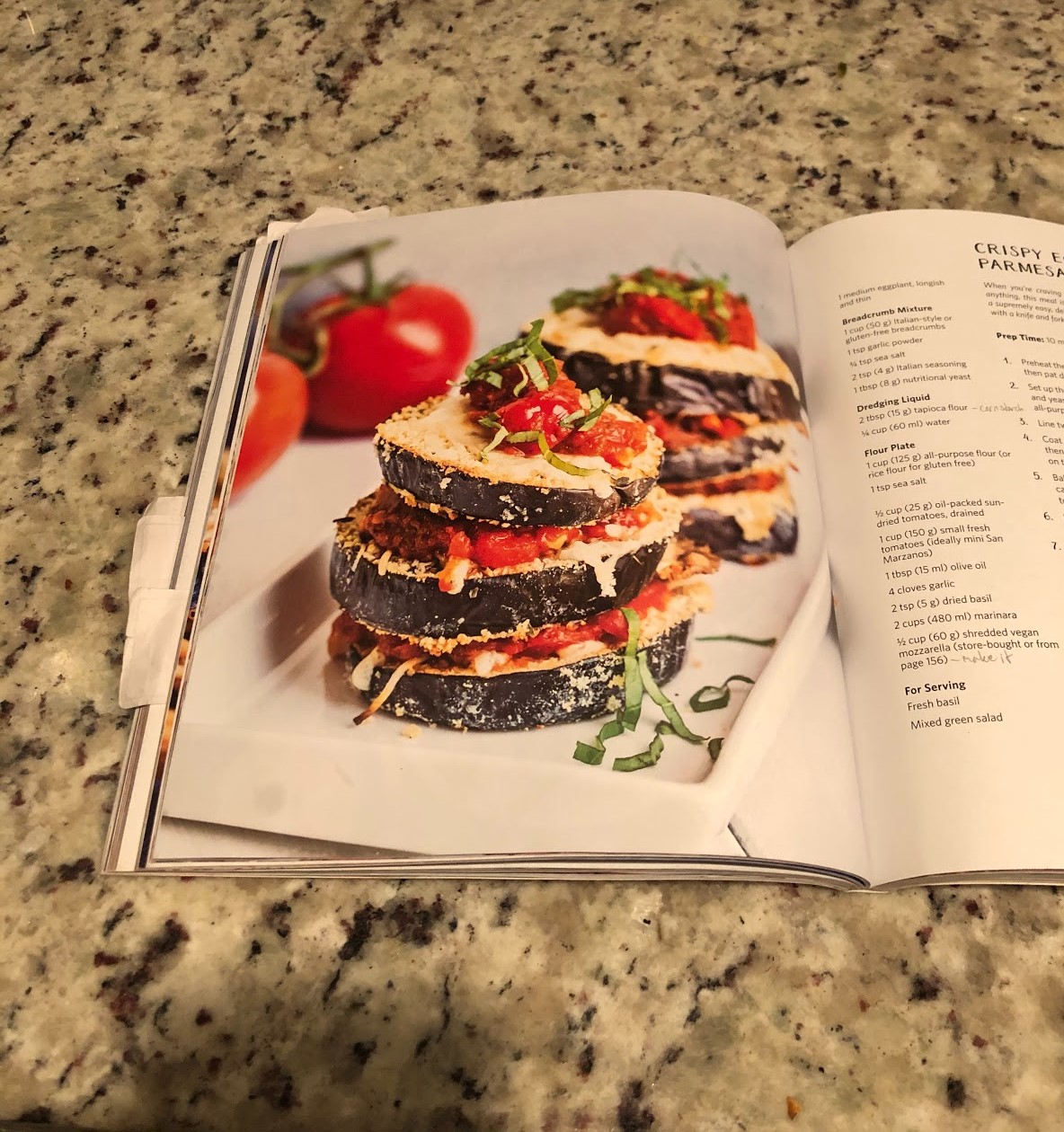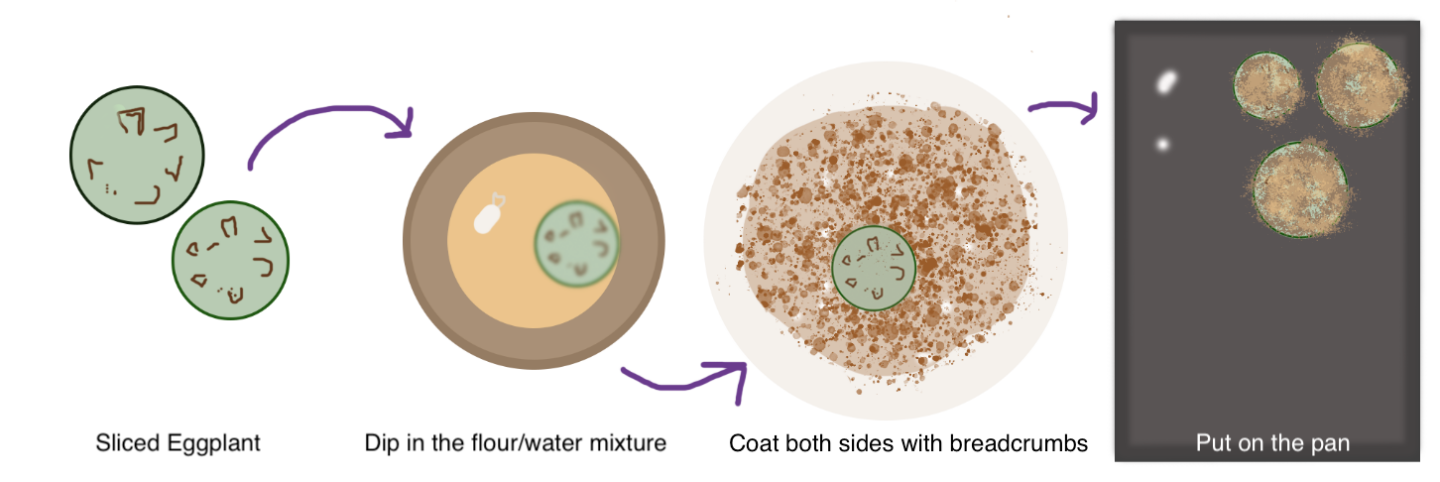Author: Abby de Riel ‘22
A Buddha bowl is a delicious dish of any grains, protein, vegetables, and dressing of your choosing! These bowls, usually vegan, are highly nutritious and make for a balanced meal. They are also inexpensive and help to reduce food waste by being flexible in their ingredients (for example, I’m using some leftovers!). Plus — these ingredients have a lower carbon footprint and produce can include whatever is locally sourced in your area! It is very simple to assemble and ingredients can be portioned however you’d like.
These are my ingredients for today:
- Grains: ¼ cup quinoa flakes
- Protein: 1 oz. pumfu, which is soy-free and made with pumpkin seeds!
- Veggies (which I’m roasting): 1 cup mix of squash, cauliflower, and carrots
- Leafy vegetable: 1 cup spinach
- Dressing: homemade chickpea hummus & sesame seeds
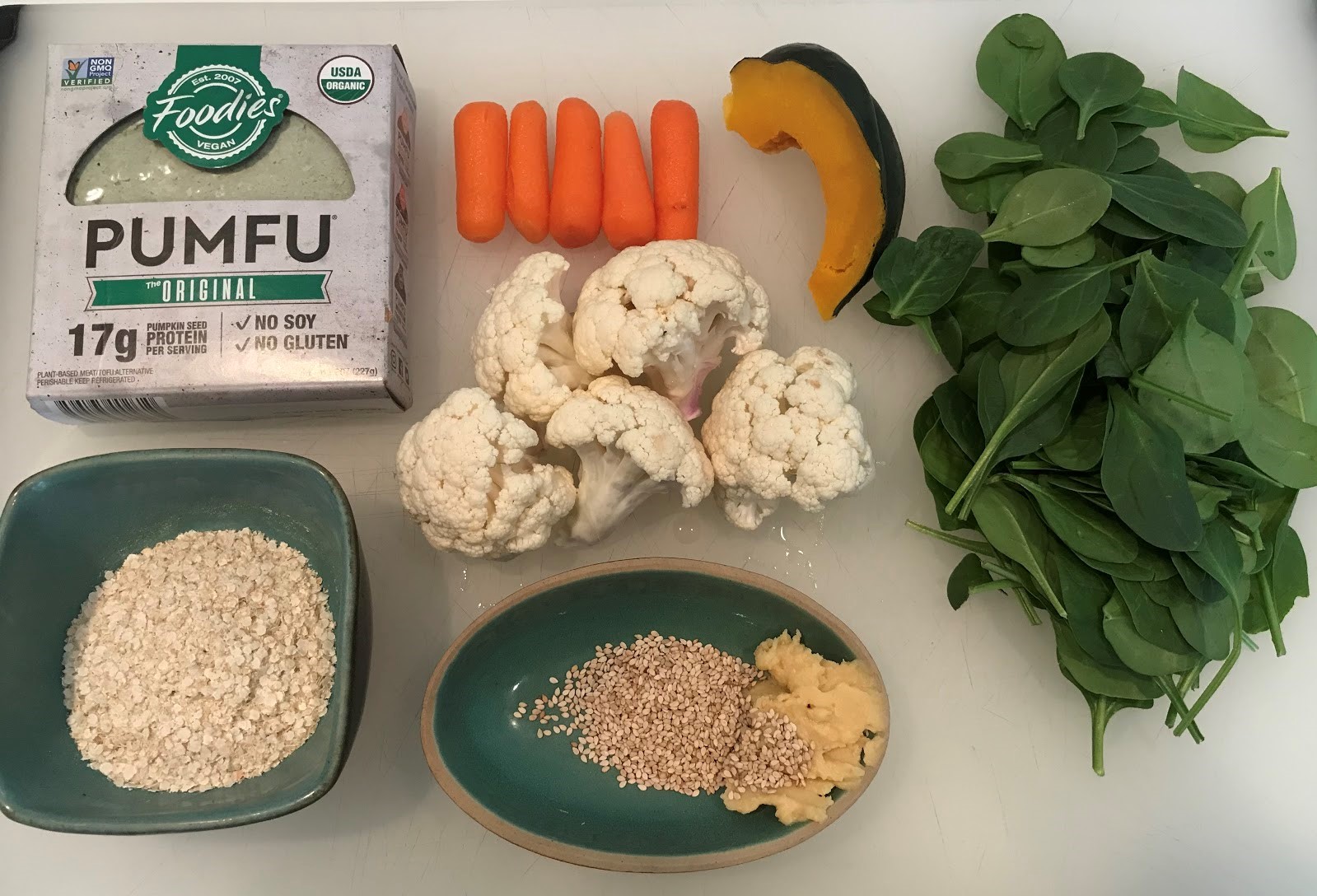
Steps:
Step 1: First, I roast my protein and vegetables. I chop up a piece of pumfu and mix it with my cut-up veggies; I toss it with a dash of salt, pepper, and a few drops of oil. I put it all on a tray in a toaster oven at 175 °C (350 °F) for 10 minutes.

Step 2: Meanwhile, prepare your grains: I boil some water in a pot — 2 times as much water as my serving of quinoa — and put in my quinoa flakes at a low boil. Stirring frequently, this only takes about 90 seconds! It’s done once the water has been absorbed and the flakes look puffy and start to bubble.
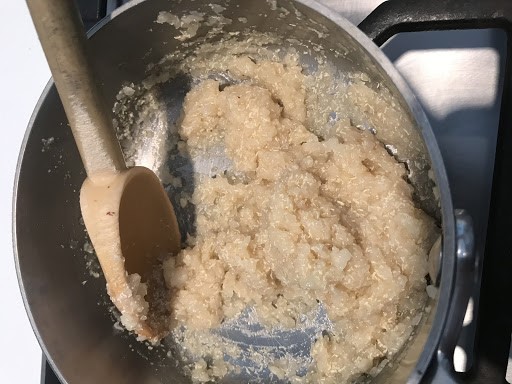
Step 3: Make the dressing! This is super flexible depending on your taste buds; I used some hummus and sesame seeds, but tahini sauce is also super popular.
Step 4: Lastly, assemble your bowl. Start with the grains in the center and put your roasted protein/veggies around it; drizzle your dressing on top. Yum!
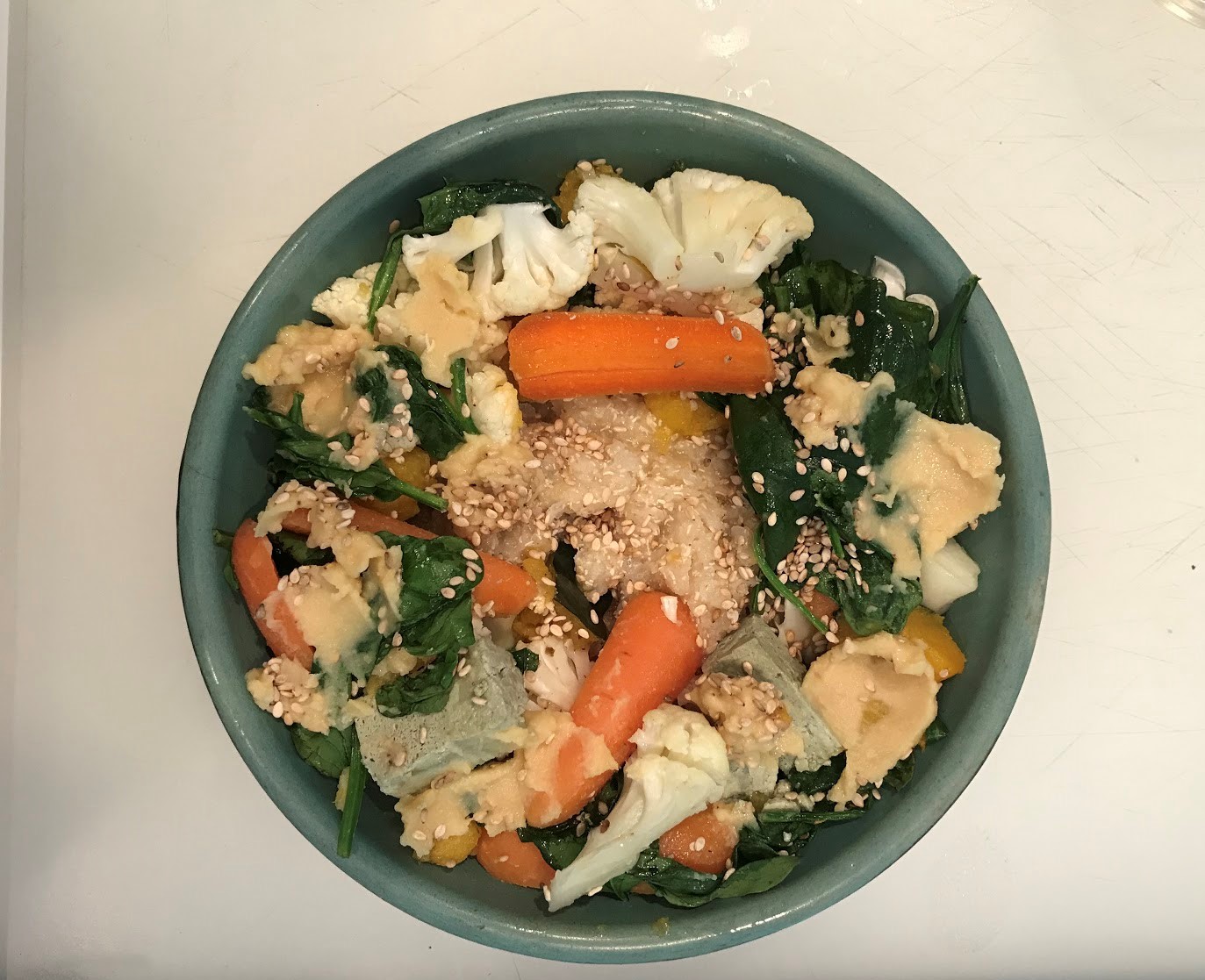
This series is brought to you by student group, Greening Dining




